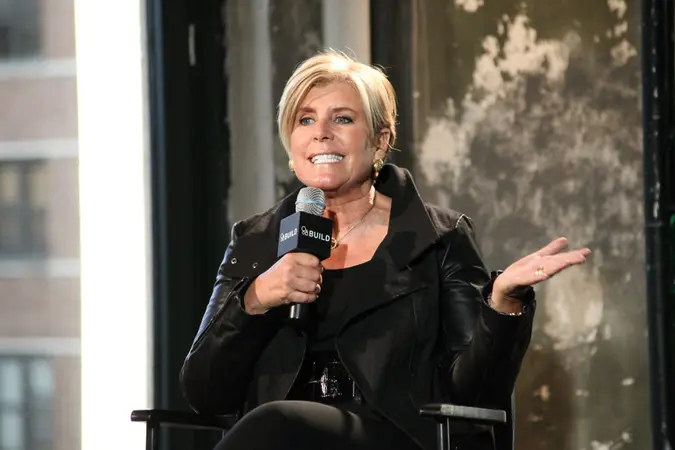Advertiser Disclosure
GOBankingRates works with many financial advertisers to showcase their products and services to our audiences. These brands compensate us to advertise their products in ads across our site. This compensation may impact how and where products appear on this site. We are not a comparison-tool and these offers do not represent all available deposit, investment, loan or credit products.
Here’s the Cost of Living in Every State
 Written by
Andrew Lisa
Written by
Andrew Lisa
 Edited by
Melanie Grafil
Edited by
Melanie Grafil

Commitment to Our Readers
GOBankingRates' editorial team is committed to bringing you unbiased reviews and information. We use data-driven methodologies to evaluate financial products and services - our reviews and ratings are not influenced by advertisers. You can read more about our editorial guidelines and our products and services review methodology.

20 YearsHelping You Live Richer

Reviewed by Experts

Trusted by Millions of Readers
The last few years have been more expensive for Americans than in decades due to severe inflation and ever-rising cost of living. People living on tighter budgets or more frugal lifestyles may be looking to move to other, cheaper states.
Some states will let you spread your dollars more than others. Using data from the Missouri Economic Research and Information Center, and the Bureau of Labor Statistics, GOBankingRates determined the cost-of-living index in each state compared to the overall national average. The study included costs associated with six categories: housing, utilities, groceries, healthcare, transportation and miscellaneous expenses.
Here’s the cost of living in all 50 states, and you can also check out the most livable city in every state.
Alabama
- Average annual cost of living: $68,006
- U.S. rank (1 is cheapest): 5
- Lowest cost-of-living index: Housing, 69.5
- Highest cost-of-living index: Utilities, 100
Alaska
- Average annual cost of living: $95,673
- U.S. rank (1 is cheapest): 47
- Lowest cost-of-living index: Transportation, 114.3
- Highest cost-of-living index: Utilities, 152.8
Arizona
- Average annual cost of living: $86,167
- U.S. rank (1 is cheapest): 36
- Lowest cost-of-living index: Health, 92.7
- Highest cost-of-living index: Housing, 131.9
Arkansas
- Average annual cost of living: $68,547
- U.S. rank (1 is cheapest): 6
- Lowest cost-of-living index: Health, 85.7
- Highest cost-of-living index: Misc., 96.7
California
- Average annual cost of living: $111,901
- U.S. rank (1 is cheapest): 48
- Lowest cost-of-living index: Health, 107.7
- Highest cost-of-living index: Housing, 208.7
Colorado
- Average annual cost of living: $78,826
- U.S. rank (1 is cheapest): 32
- Lowest cost-of-living index: Utilities, 89.3
- Highest cost-of-living index: Housing, 107.7
Connecticut
- Average annual cost of living: $86,785
- U.S. rank (1 is cheapest): 40
- Lowest cost-of-living index: Grocery, 102.6
- Highest cost-of-living index: Utilities, 135.9
Delaware
- Average annual cost of living: $77,898
- U.S. rank (1 is cheapest): 5
- Lowest cost-of-living index: Housing, 97.4
- Highest cost-of-living index: Misc., 102.9
Florida
- Average annual cost of living: $79,444
- U.S. rank (1 is cheapest): 34
- Lowest cost-of-living index: Transportation, 98.8
- Highest cost-of-living index: Housing, 108.1
Georgia
- Average annual cost of living: $70,557
- U.S. rank (1 is cheapest): 12
- Lowest cost-of-living index: Housing, 79.2
- Highest cost-of-living index: Health, 100.4
Hawaii
- Average annual cost of living: $144,436
- U.S. rank (1 is cheapest): 50
- Lowest cost-of-living index: Health, 121.1
- Highest cost-of-living index: Housing, 310
Idaho
- Average annual cost of living: $78,826
- U.S. rank (1 is cheapest): 33
- Lowest cost-of-living index: Utilities, 77.9
- Highest cost-of-living index: Transportation, 109.6
Illinois
- Average annual cost of living: $72,952
- U.S. rank (1 is cheapest): 21
- Lowest cost-of-living index: Housing, 83.3
- Highest cost-of-living index: Transportation, 103.4
Indiana
- Average annual cost of living: $69,938
- U.S. rank (1 is cheapest): 10
- Lowest cost-of-living index: Housing, 77.1
- Highest cost-of-living index: Transportation, 98.7
Iowa
- Average annual cost of living: $69,320
- U.S. rank (1 is cheapest): 8
- Lowest cost-of-living index: Housing, 74.8
- Highest cost-of-living index: Transportation, 97.6
Kansas
- Average annual cost of living: $67,234
- U.S. rank (1 is cheapest): 3
- Lowest cost-of-living index: Housing, 72.4
- Highest cost-of-living index: Utilities, 98.7
Kentucky
- Average annual cost of living: $71,870
- U.S. rank (1 is cheapest): 17
- Lowest cost-of-living index: Housing, 78.7
- Highest cost-of-living index: Health, 106.6
Louisiana
- Average annual cost of living: $71,252
- U.S. rank (1 is cheapest): 14
- Lowest cost-of-living index: Utilities, 78.5
- Highest cost-of-living index: Misc., 99.4
Maine
- Average annual cost of living: $86,631
- U.S. rank (1 is cheapest): 38
- Lowest cost-of-living index: Groceries, 101.5
- Highest cost-of-living index: Housing, 128.7
Maryland
- Average annual cost of living: $89,104
- U.S. rank (1 is cheapest): 45
- Lowest cost-of-living index: Health, 100.9
- Highest cost-of-living index: Housing, 135.8
Massachusetts
- Average annual cost of living: $112,752
- U.S. rank (1 is cheapest): 49
- Lowest cost-of-living index: Groceries, 104.4
- Highest cost-of-living index: Housing, 218.8
Michigan
- Average annual cost of living: $69,861
- U.S. rank (1 is cheapest): 5
- Lowest cost-of-living index: Housing, 73.7
- Highest cost-of-living index: Transportation, 99.6
Minnesota
- Average annual cost of living: $73,493
- U.S. rank (1 is cheapest): 23
- Lowest cost-of-living index: Housing, 80.9
- Highest cost-of-living index: Groceries, 102.1
Mississippi
- Average annual cost of living: $67,929
- U.S. rank (1 is cheapest): 4
- Lowest cost-of-living index: Housing, 73.9
- Highest cost-of-living index: Health, 99.3
Missouri
- Average annual cost of living: $68,547
- U.S. rank (1 is cheapest): 7
- Lowest cost-of-living index: Housing, 77.8
- Highest cost-of-living index: Utilities, 98.8
Montana
- Average annual cost of living: $73,338
- U.S. rank (1 is cheapest): 22
- Lowest cost-of-living index: Utilities, 83.3
- Highest cost-of-living index: Transportation, 109.7
Nebraska
- Average annual cost of living: $71,948
- U.S. rank (1 is cheapest): 18
- Lowest cost-of-living index: Housing, 80.0
- Highest cost-of-living index: Misc., 100.6
Nevada
- Average annual cost of living: $78,285
- U.S. rank (1 is cheapest): 31
- Lowest cost-of-living index: Health, 87.1
- Highest cost-of-living index: Utilities, 103.9
New Hampshire
- Average annual cost of living: $87,017
- U.S. rank (1 is cheapest): 41
- Lowest cost-of-living index: Groceries, 99.9
- Highest cost-of-living index: Housing, 117.5
New Jersey
- Average annual cost of living: $88,563
- U.S. rank (1 is cheapest): 44
- Lowest cost-of-living index: Utilities, 100.6
- Highest cost-of-living index: Housing, 136.9
New Mexico
- Average annual cost of living: $72,102
- U.S. rank (1 is cheapest): 19
- Lowest cost-of-living index: Utilities, 84.3
- Highest cost-of-living index: Health, 102.7
New York
- Average annual cost of living: $95,286
- U.S. rank (1 is cheapest): 46
- Lowest cost-of-living index: Utilities, 99.7
- Highest cost-of-living index: Housing, 168
North Carolina
- Average annual cost of living: $75,580
- U.S. rank (1 is cheapest): 28
- Lowest cost-of-living index: Housing, 93.3
- Highest cost-of-living index: Health, 104.7
North Dakota
- Average annual cost of living: $71,020
- U.S. rank (1 is cheapest): 13
- Lowest cost-of-living index: Housing, 80.1
- Highest cost-of-living index: Health, 108.2
Ohio
- Average annual cost of living: $72,798
- U.S. rank (1 is cheapest): 20
- Lowest cost-of-living index: Housing, 85.7
- Highest cost-of-living index: Utilities, 99.3
Oklahoma
- Average annual cost of living: $66,229
- U.S. rank (1 is cheapest): 2
- Lowest cost-of-living index: Housing, 68.6
- Highest cost-of-living index: Health, 96.6
Oregon
- Average annual cost of living: $86,554
- U.S. rank (1 is cheapest): 37
- Lowest cost-of-living index: Utilities, 89.7
- Highest cost-of-living index: Housing, 133.3
Pennsylvania
- Average annual cost of living: $73,493
- U.S. rank (1 is cheapest): 24
- Lowest cost-of-living index: Housing, 84.3
- Highest cost-of-living index: Utilities, 106
Rhode Island
- Average annual cost of living: $86,708
- U.S. rank (1 is cheapest): 39
- Lowest cost-of-living index: Transportation, 96.3
- Highest cost-of-living index: Misc., 114.2
South Carolina
- Average annual cost of living: $74,112
- U.S. rank (1 is cheapest): 26
- Lowest cost-of-living index: Housing, 86.7
- Highest cost-of-living index: Utilities, 102.3
South Dakota
- Average annual cost of living: $71,252
- U.S. rank (1 is cheapest): 15
- Lowest cost-of-living index: Utilities, 83.5
- Highest cost-of-living index: Health, 101
Tennessee
- Average annual cost of living: $69,938
- U.S. rank (1 is cheapest): 11
- Lowest cost-of-living index: Housing, 83.2
- Highest cost-of-living index: Groceries, 97.1
Texas
- Average annual cost of living: $71,639
- U.S. rank (1 is cheapest): 16
- Lowest cost-of-living index: Housing, 82
- Highest cost-of-living index: Utilities, 105.3
Utah
- Average annual cost of living: $81,067
- U.S. rank (1 is cheapest): 35
- Lowest cost-of-living index: Health, 88.4
- Highest cost-of-living index: Housing, 116.8
Vermont
- Average annual cost of living: $88,408
- U.S. rank (1 is cheapest): 43
- Lowest cost-of-living index: Transportation, 95.8
- Highest cost-of-living index: Housing, 129.7
Virginia
- Average annual cost of living: $77,821
- U.S. rank (1 is cheapest): 29
- Lowest cost-of-living index: Transportation, 94.9
- Highest cost-of-living index: Health, 105
Washington
- Average annual cost of living: $88,254
- U.S. rank (1 is cheapest): 42
- Lowest cost-of-living index: Utilities, 92.6
- Highest cost-of-living index: Housing, 126.9
West Virginia
- Average annual cost of living: $64,992
- U.S. rank (1 is cheapest): 1
- Lowest cost-of-living index: Housing, 59.9
- Highest cost-of-living index: Groceries, 99
Wisconsin
- Average annual cost of living: $74,962
- U.S. rank (1 is cheapest): 27
- Lowest cost-of-living index: Housing, 91.6
- Highest cost-of-living index: Health, 106.4
Wyoming
- Average annual cost of living: $73,802
- U.S. rank (1 is cheapest): 25
- Lowest cost-of-living index: Housing, 88.6
- Highest cost-of-living index: Health, 104.3
Methodology: For this study, GOBankingRates analyzed each state by looking at the cost-of-living indexes, as sourced from the Missouri Economic and Research Information Center’s 2024 overall cost of living indexes. Using the Bureau of Labor Statistics 2023 Consumer Expenditure Survey, GOBankingRates calculated average costs by looking at factors such as (1) total annual expenditures, (2) annual grocery (“food at home”) expenditures, (3) annual housing (“shelter”) expenditures, (4) annual utilities (“utilities, fuel and public services”) expenditures, (5) annual transportation (“Gasoline, other fuels and motor oil” + “other vehicle expenses”) expenditures, (6) annual healthcare expenditures and (7) annual miscellaneous expenditures. All data was collected on and is up to date as of Feb. 25, 2025.
More From GOBankingRates
Share This Article:




You May Also Like

Net Worth or Income -- Which Each Generation Should Focus on Increasing in 2026
November 12, 2025
8 min Read

Trump Said He'd Cut Energy Prices in Half in 12 Months: Here's Where They're at Today
November 14, 2025
8 min Read

Trump Promises $2K Stimulus Checks, but Are They Legit and Could You Get One?
November 14, 2025
8 min Read



Men Wait, Women Don't -- Who's Right When It Comes to This One Financial Tactic?
November 13, 2025
8 min Read

Warren Buffett: 3 Rules That Built His Wealth & Can Do the Same for You
November 13, 2025
8 min Read



Dave Ramsey: Here's Why You Can't Invest and Pay Off Debt at the Same Time
November 13, 2025
8 min Read

3 Financial Advisors Share the 'Splurges' That Actually Grew Their Wealth
November 14, 2025
8 min Read

Questions Around The Economy
Make your money work for you
Get the latest news on investing, money, and more with our free newsletter.
By subscribing, you agree to our Terms of Use and Privacy Policy. Unsubscribe at any time.


Thanks!
You're now subscribed to our newsletter.
Check your inbox for more details.



Sending you timely financial stories that you can bank on.
Sign up for our daily newsletter for the latest financial news and trending topics.
For our full Privacy Policy, click here.
Looks like you're using an adblocker
Please disable your adblocker to enjoy the optimal web experience and access the quality content you appreciate from GOBankingRates.
- AdBlock / uBlock / Brave
- Click the ad blocker extension icon to the right of the address bar
- Disable on this site
- Refresh the page
- Firefox / Edge / DuckDuckGo
- Click on the icon to the left of the address bar
- Disable Tracking Protection
- Refresh the page
- Ghostery
- Click the blue ghost icon to the right of the address bar
- Disable Ad-Blocking, Anti-Tracking, and Never-Consent
- Refresh the page






